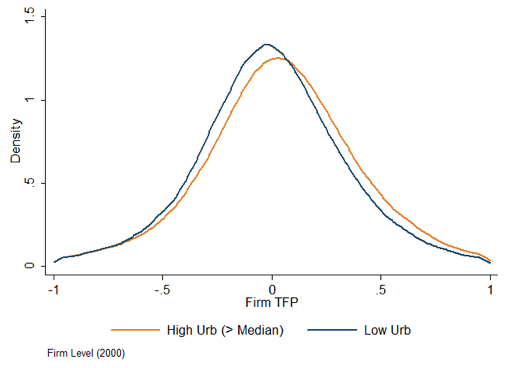
A new study finds evidence that denser populations are more productive:
Is it selection, or the sorting of talents (Behrens et al. 2014) that leads only the most productive firms to locate in denser areas? Or do agglomeration economies explain why firms located in less dense environments are less productive? Empirical evidence suggests that the main driver of differences in productivity is not selection (i.e. tougher competition inducing less productive firms to exit the market) but agglomeration economies (Combes et al. 2012). The usual suspects are the higher availability of services, better infrastructure, sharing of public goods, a denser labour market allowing for better matching, and technology spillovers (Duranton and Puga 2004). Using firm-level data for France, we confirm in a recent study that misallocation has a spatial dimension: resource allocation and the associated effect on productivity are related not only to firms’ characteristics, but also to the environment in which they operate (Fontagné and Santoni 2016). Denser commuting zones seem to offer a better match between employers and employees.

It’s a bit technical, but interesting nonetheless. Check it out.